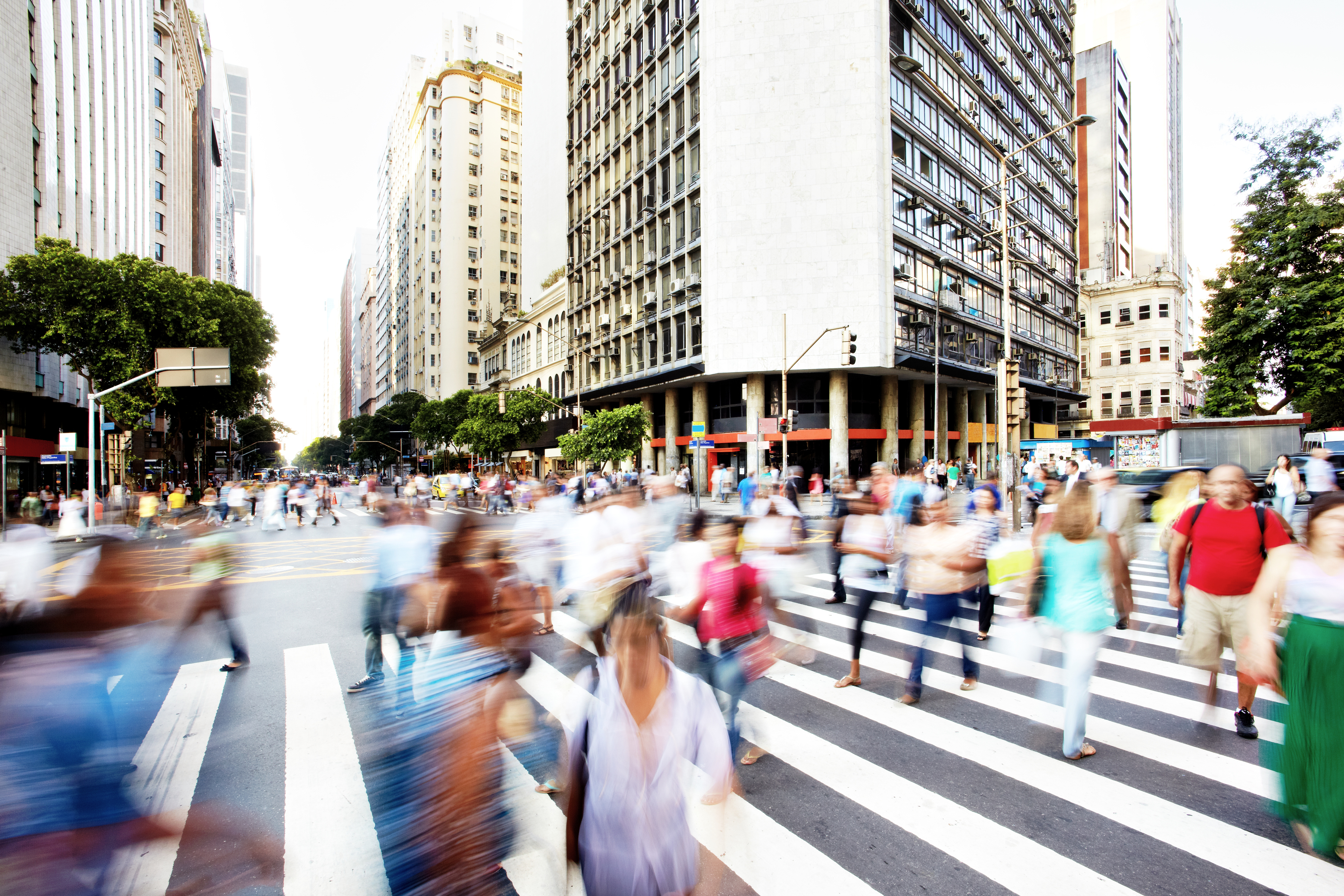Smoothing the path to connected transportation systems in urban areas all round the world takes a lot of planning: Cisco’s Kyle Connor lays out the four key areas on which he thinks cities should focus.
Forward-thinking cities around the world are exploring innovative, new ways to leverage the Internet of Things (IoT) and related technologies to create more connected and efficient transportation systems. Through greater digitisation and connectivity, cities can optimise public transit routes, reduce vehicle congestion, improve emergency response times and even reduce CO2 emissions. But for hyper-connected, IoT-enabled transportation systems to become a reality, many cities will need to modernise not only their physical transportation infrastructure, but also their underlying technology architectures. To support the more than 380 million connected vehicles expected to be on the roads by 2020, as well as millions of roadside sensors, smart traffic signals, automated parking garages and other technologies, our transit systems need the ability to share real-time data with each other and the environment around them. To bring their connected transportation goals to fruition, cities will need to focus on four key areas:
1. Build a multi-service network
While many transportation officials may be tempted to focus on physical infrastructure assets, it is the underlying technology network that is the most lagging in many cities. Most current transportation networks are built on closed, proprietary systems, making it difficult to gather and share data from different infrastructure assets all running on disparate technology platforms. Transportation officials must begin to think of technology as infrastructure. For connected transportation to become a reality, cities need to be able to gather data in real time from IoT-enabled assets like traffic lights and road sensors, combine it with other data such as current weather data or video feeds from internet protocol (IP) cameras, and share it with connected vehicles, public transit systems, emergency response crews and more. To do this, cities must transition to a more modern, scalable network architecture. They should focus on building a multi-service network capable of integrating multiple different technologies onto one common platform. With a multi-service network, cities can have a single platform for delivering all the necessary transportation-related services, whether it’s connected and highly automated vehicles, roadway weather information systems, video components, dynamic digital signage or other IoT technologies. A robust and scalable network also makes these technologies and services more cost-effective to deploy and enable the high availability and redundancy needed in the case of emergencies or when operating in extreme weather conditions. When cities have a fragmented approach, where different aspects of the transportation system are built on separate infrastructures, it can cause challenges and delays as operators attempt to collect data from different sources and manually make decisions. For example, the city of Glasgow in Scotland created an integrated platform that gathers and visualises data from assets including fire engines, ambulances, weather sensors and even volunteer networks in the event of an emergency, such as flood. With a real-time understanding of what’s happening on the ground, city officials and emergency responders can streamline and speed their response efforts. In an emergency situation, having a single platform which can direct all your resources and people to the right place at the right time is critical and can save lives.
2. Data analytics and intelligence at the edge
Once cities begin connecting their transportation systems to the IoT and collecting data, the next step is to extract value from that data which can be used to benefit citizens. To get the maximum value, cities must apply advanced analytics and intelligence at the edge of the network, where the data is generated. Currently, much of what’s available to transportation operation centres is analogue or serial data that must be back-hauled to a transportation management centre and essentially pieced together by an operator. This is inefficient and can cause delays when transportation officials are trying to forecast the impacts of upcoming roadwork or proposed network changes, or when attempting to manage traffic problems caused by special events. To overcome these types of challenges, cities must first connect and digitise their infrastructure assets, then pull the information to an IP environment and set up policies and routines that can be run automatically. Using fog architecture, policies can be automatically run in the field without needing a person to make decisions or get involved. This means that you do not necessarily need someone in the transportation management centre creating and enacting policies whenever a weather event occurs, or an unexpected vehicle breakdown causes widespread gridlock, for example. By applying machine learning at the edge, the intelligent network can learn best practices over time to improve operations and processes whenever one of these types of incidents occurs. For example, in Germany, the Hamburg Port Authority built an integrated traffic management system supporting roads, waterways and rail. Because the port is located in the middle of the city, ships offloading cargo would cause bridge closures and traffic congestion on roads throughout the city. Now, all road sensors are connected via an IP network to monitor traffic flow. The centralised Port Road Management Centre receives all the data, which is then analysed via algorithms to determine traffic speed, congestion and other significant issues. Digital billboards along the road communicate to drivers in real time about delays and traffic patterns, rerouting traffic when necessary. As a result of the integrated system, the city is able to reduce congestion and more efficiently manage bridge closures, saving residents valuable time during their busy commutes.
3. Enact strong cybersecurity from end to end
As more transportation infrastructure assets are connected to the network, the attack surface grows, and cybersecurity vulnerabilities are exposed. Transportation systems are increasingly becoming alluring targets for cybercriminals, who can sabotage or even commandeer both the IT systems and the operational technology controlling our transportation systems. To safeguard their systems, transportation leaders must build security into their networks from end to end – spanning from the data centre to the edge of the network and even to in-vehicle systems. Transportation officials should leverage existing cybersecurity frameworks rather than creating policies and procedures from scratch. In the UK, the Department for Transport’s principles of cybersecurity for connected and automated vehicles and its guidance for rail cybersecurity are good places to begin, not to mention working with the ecosystem of successful cybersecurity providers. Cities should also make cybersecurity investment a high priority in both capital planning as well as operational planning, much the way safety is today. They should also develop an integrated security architecture to cover the gaps that point solutions cannot address and should consider starting a security operations centre (SOC) if they have not done so already.
4. Establish policies for data ownership and privacy
As citizens’ private vehicles and mobile devices are increasingly connected to - and communicating with - infrastructure, cities will need to answer difficult questions around how much control individuals have over the data their vehicles generate and share, who owns that data and who is allowed to monetise it. Cities will need to establish policies addressing which parties can access data generated by different elements of the transportation system, when they can access the data and how it can be used. This should be a national – and where possible, international – data exchange and architecture. It will enable the sharing of real-time safety data with connected vehicles of all types as they come onto the network, so they can gain the maximum safety, mobility and efficiency value from the data that cities, local and national governments share. As an example, the city of Linz in Austria connected its entire public transit system to the IoT and transformed its light rail trams and buses into mobile Wi-Fi hotspots. On average, more than 24,000 unique users connect to the public Wi-Fi on the transit system each month, generating more than 4,000GB of wireless traffic. Additionally, the city captures more than 500 data sets from each tram and bus, which it uses for everything from predictive maintenance to optimising drivers’ acceleration and braking behaviour. The city’s philosophy is that the data gathered from the transportation systems is a public resource, so they have made much of it accessible to citizens. In fact, the city has created a smartphone app where citizens can view data showing the reduction in energy consumption and CO2 emissions thanks to the efficiency gains made by the tram drivers. They are also sharing data with third parties who are developing smart parking applications and other mobile apps to help improve residents’ daily lives.As cities race to create more connected and digitised transportation systems, they can ensure a smooth ride by avoiding common technology pitfalls. By focusing on building an integrated, multi-service network and applying intelligence through advanced analytics at the edge, they can enable greater connectivity and the exchange of data across all transportation assets. When combined with strong cybersecurity and data privacy policies, this architecture forms the foundation for a modern, connected, transportation system that delivers improved safety, mobility and efficiency.












